Walking in the Footsteps of John the Baptist, Part 5
James McGrath has recently traveled to Israel to walk in the footsteps of John the Baptist. I thought it might be of interest that we journey with James as well to discover the early days of Jesus' ministry through his cousin John. Enjoy.
R.E. Slater
August 25, 2022
In the Footsteps of John the Baptist Part 5:
The Pools of Bethesda and Siloam
by James F. McGrath
August 1, 2022
Visiting two of the pools mentioned in the Gospel of John connected directly not just with my "John the Baptist project" but others. My doctoral work and first book, John’s Apologetic Christology, included significant attention to the stories in John 5 and 9. My recent What Jesus Learned from Women features a chapter on Jesus’ grandmother, Mary’s mother Hannah or Anne. As it happens, the Church of St. Anne is built on the location where excavation has revealed the pools of Bethesda.
Lately I have been thinking about the story in John 5:1-18 and what it might have meant without the addition about an angel coming to trouble the waters so that they took on healing properties. Some scribe was puzzled and added those details to explain the connection between healing and the man’s inability to get into the pool. That scribe was probably not the only one who wondered about this. The author presumably thought what they wrote made sense. Might they have expected readers to connect immersion in a pool with flowing water and healing by way of an implied reference to baptism?
The church has a long history of connecting baptism and healing. Might this story make a point that many readers have also missed in the parallel account in the Synoptic Gospels in which Jesus heals a paralyzed man (Matthew 9:1-8 and parallels)? The meaning in John [may] be that the man wishes to seek forgiveness for sin through immersion but is unable to when the water is flowing, which is when it is acceptable for ritual purposes, whether of purification as in general practice or in the seeking of forgiveness through the immersion John promoted.
The connection of sin and disability is made in the healing stories in both John 5 and John 9, as also in the Synoptic account. In the latter, there is by definition no flowing water in the home, and thus Jesus’ pronouncement of forgiveness of sin may have marked a departure from the practice of John the Baptist. I suspect that one motive John had in developing his baptism was the inequity of access to forgiveness in the Jerusalem temple for both geographic and economic reasons. Some [worshippers] were located very far away. Some would have struggled to offer an animal as a sacrifice that another could easily afford to. Jesus took the same principle further, it seems, and allowed that even flowing water could be omitted if it was too far away and the person faced mobility issues.
Whether John accepted this exception is unclear. It could be something John himself taught all along, something that Jesus innovated which John embraced, or something Jesus did that led to a parting of the ways between Jesus and his mentor. What do you think?
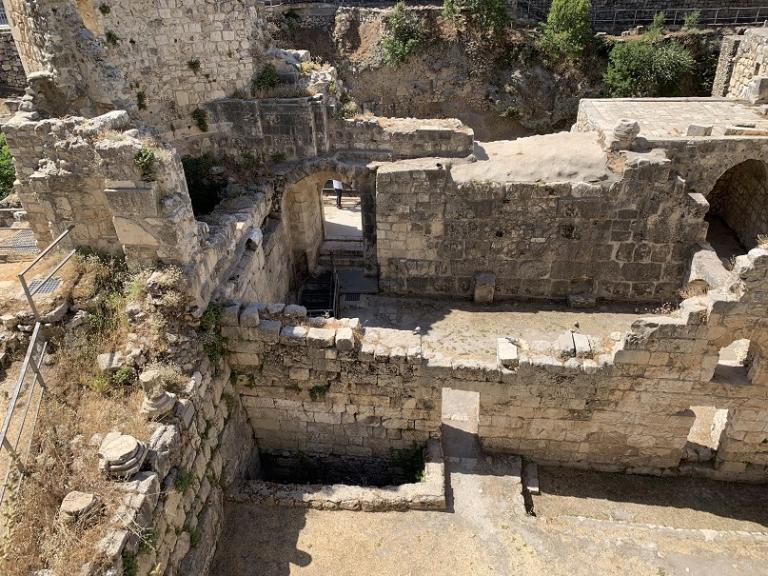
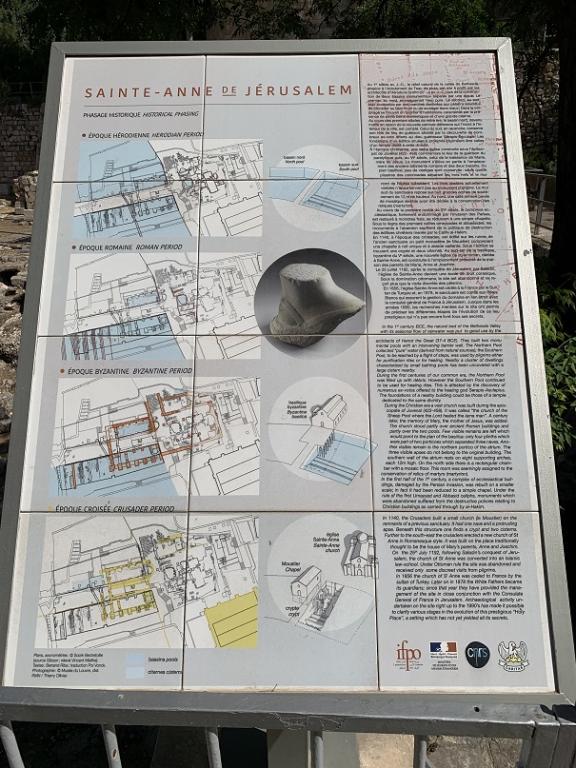
I also visited the Pools of Siloam which feature in the story I have already mentioned in John 9 where Jesus heals a man who had been born blind. Walking to Siloam from the City of David is down a steep incline. [Even] today, with the [present] traffic on the road, it is challenging for me as a sighted person. That makes me wonder what is implied by Jesus sending a blind man who appears to have been near the temple to that pool; the author of the Gospel who tells the story emphasizes that the name of the pool means “sent.” Here is a photo coming back up from the pools through the Herodian drain shaft.
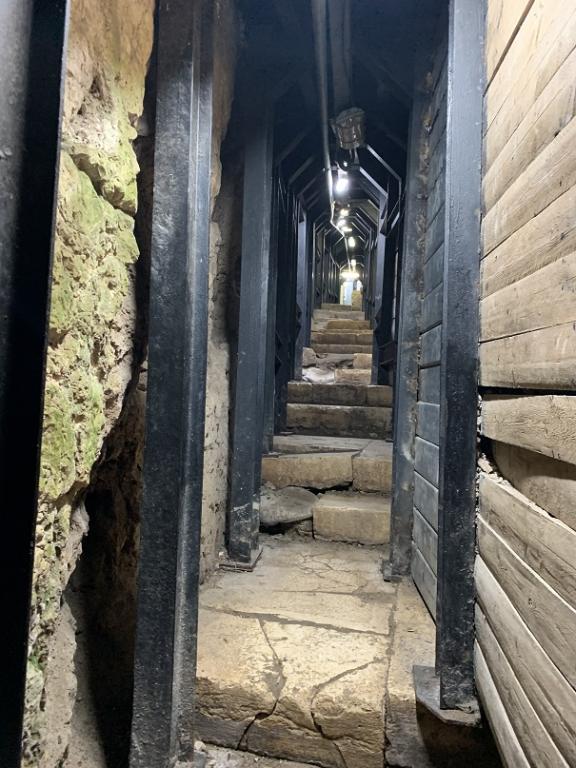
Let me mention a couple of other places I visited in Jerusalem. One is the Church of St. John the Baptist, which only opens on feast days and so I saw only the courtyard. Here I am coming through the tiny door that you have likely passed if you’ve visited the Old City but may never have noticed.
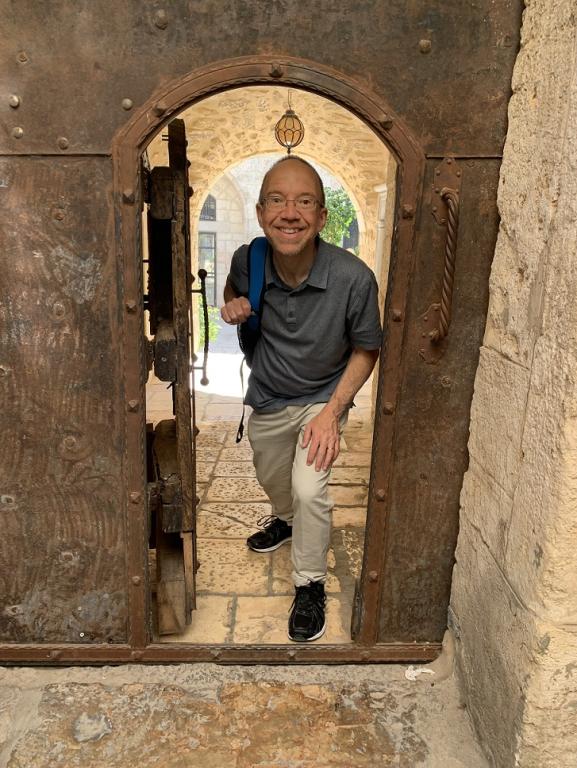
Here is an icon from the courtyard of the church.
Although I did not get to go inside there is a nice video by Eran Frankel about the church including a visit beneath it to what remains of an earlier church structure built on the site:
CHURCH OF ST. JOHN THE BAPTIST
Renovated Church of John the Baptist Jerusalem
See fragments of John the Baptist Skull
Feb 3, 2020
Fragments of John the Baptist's SKULL and of Saint Pagagiotes' skeleton at the renovated Greek Orthodox church of John the Baptist in Jerusalem.Saint Panagiotes was the new martyr who was forced to convert to Islam but did not accept it thus was killed on April 5, 1820
I [also] visited a number of other places connected with John, including the so-called Tomb of Zechariah (which is every bit as unlikely to have any connection with the father of John the Baptist as the Church of St. Anne is with the home of Mary’s parents). It was nice to pass a couple of Muslims who were seeking the tomb. Zechariah is an important figure in Islam as well as in Christianity. John the Baptist likewise features [as a similarly important personage to Muslims]. There was also an inscription in the Kidron Valley that I passed while in the vicinity reminding passersby of the connection of that place with the story of Melchizedek.
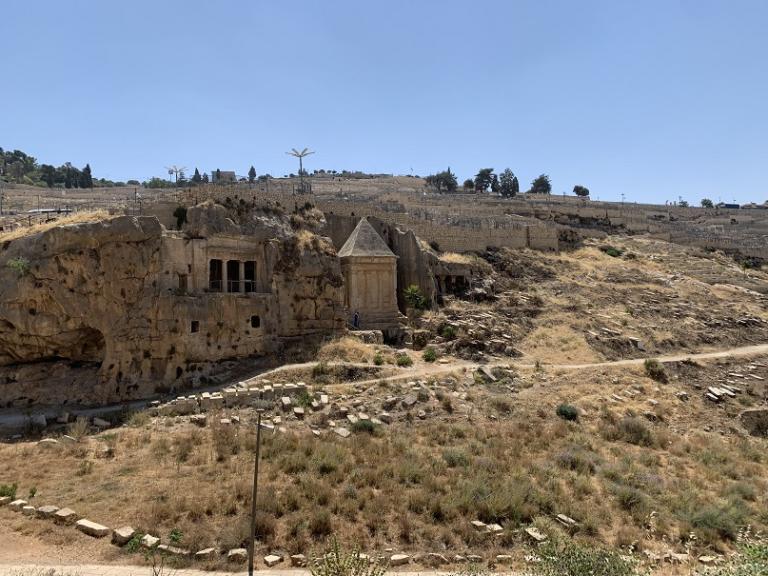
More photos will follow in the near future. Meanwhile, also somewhat related to this series and to the place where this post began, here is a really great review of my book in every sense – great as in it is positive, but also great from my perspective as an author who greatly appreciates when someone reads the book with attention to detail and finds value in what I offer in it. I hope you read the review and that it encourages you to read my book!
Phil Long mentioned this series and a number of other things in the latest Biblical Studies Carnival, including my appearance on the MythVision YouTube channel talking about John the Baptist:
Who Was John The Baptist? | James F. McGrath
Streamed live on Jul 25, 2022
Will understanding John the Baptist help us understand who the historical Jesus would have been? In this livestream Dr. James F. McGrath will be discussion his discoveries.Check out Dr. McGrath's Blog -https://www.patheos.com/blogs/religio...Follow him on Twitter - https://twitter.com/ReligionProf
Also, finally, if you’ll be in Indianapolis on Saturday August 6th then stop by the Indianapolis Public Library Author Fair where I’ll have a table and [will] be signing books. No need to buy one (and you can bring one you already own for me to sign if you like). Just say hello!

No comments:
Post a Comment